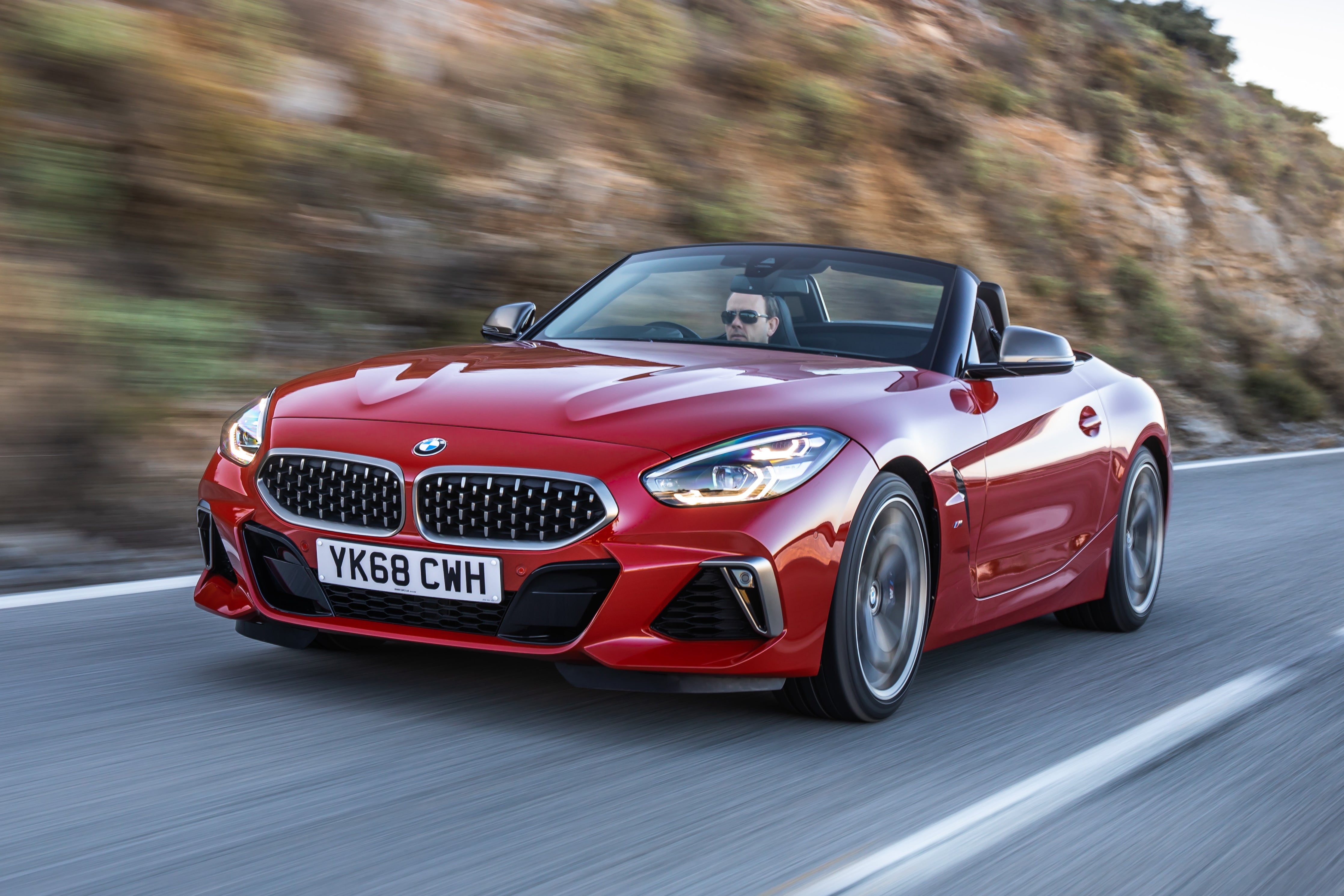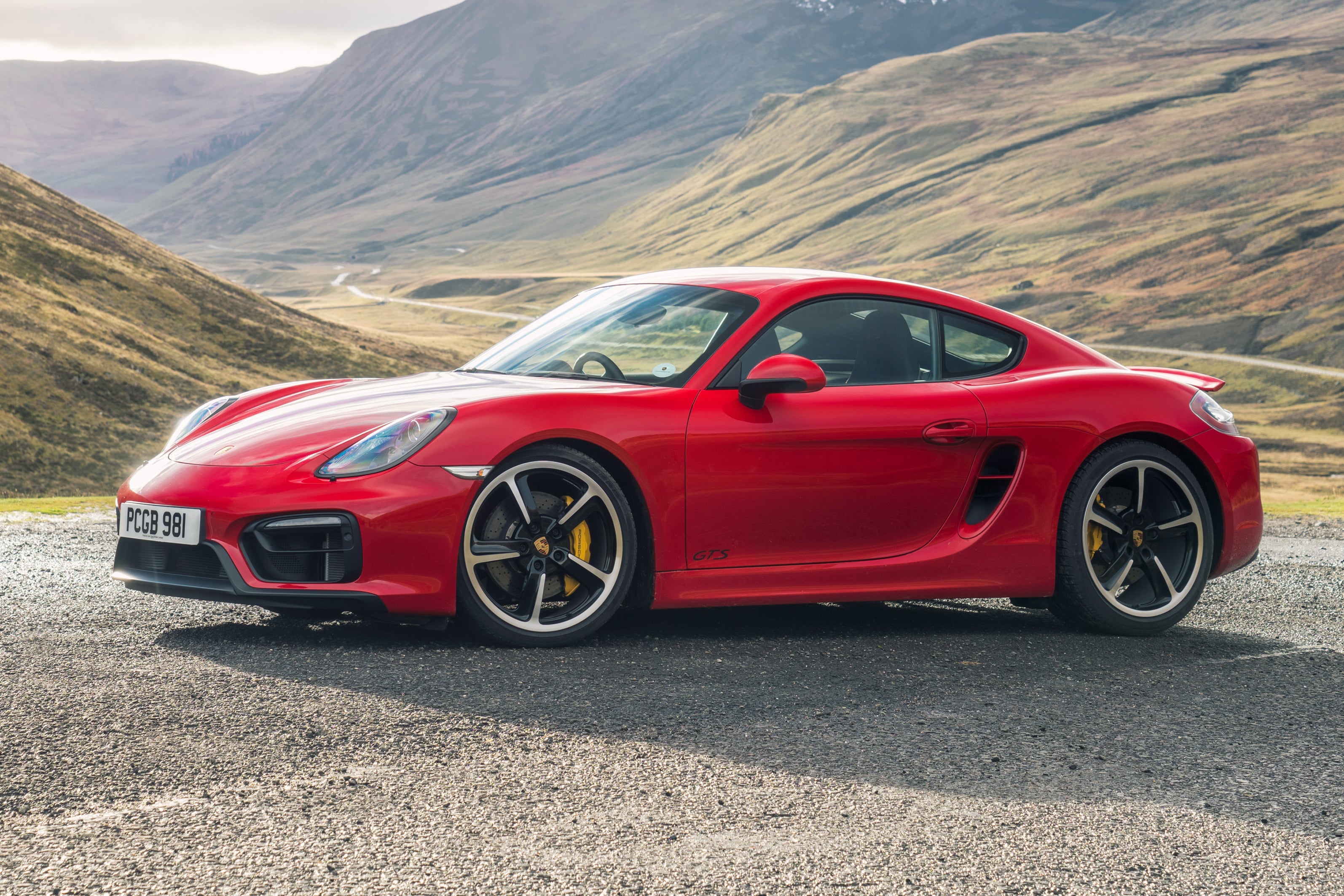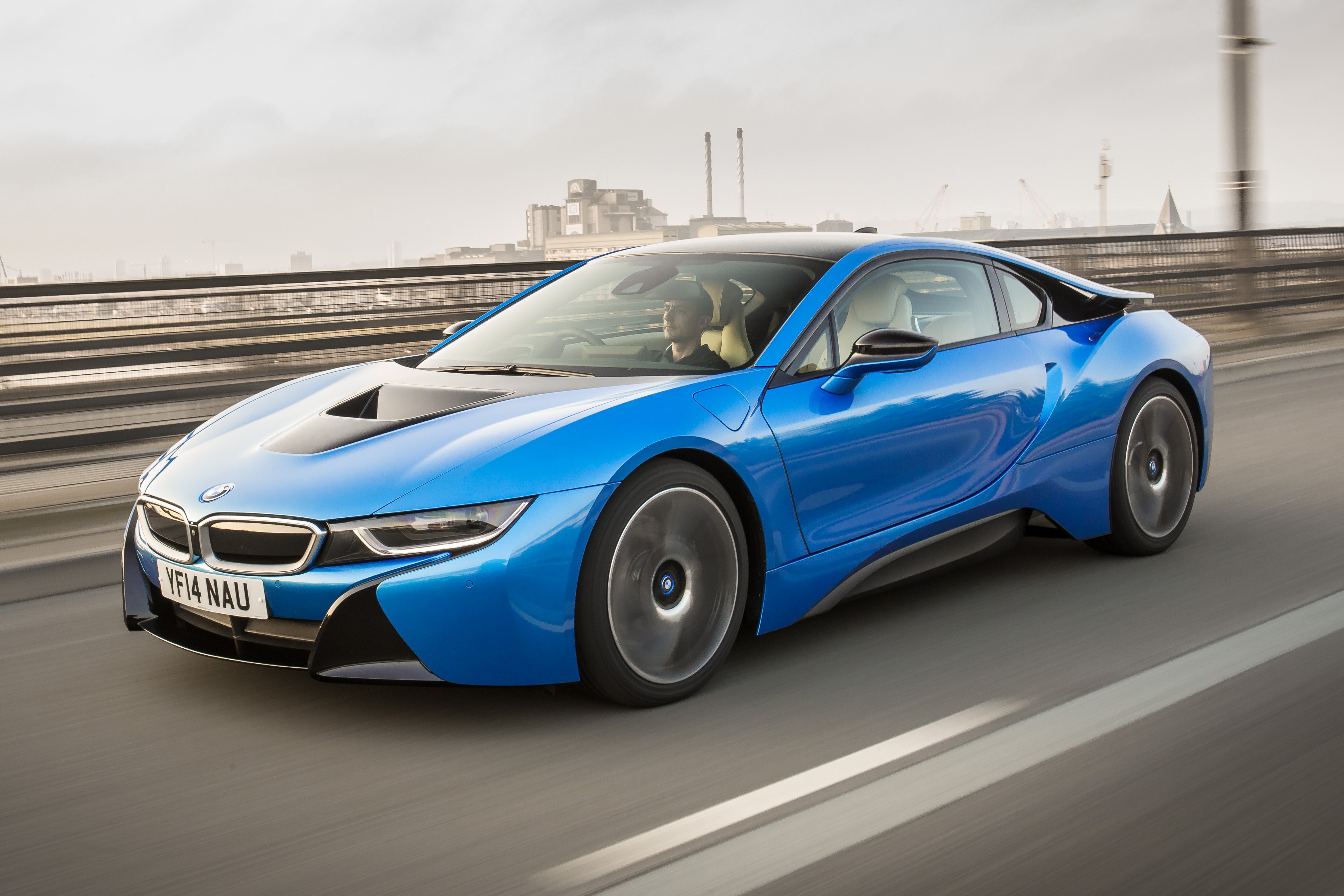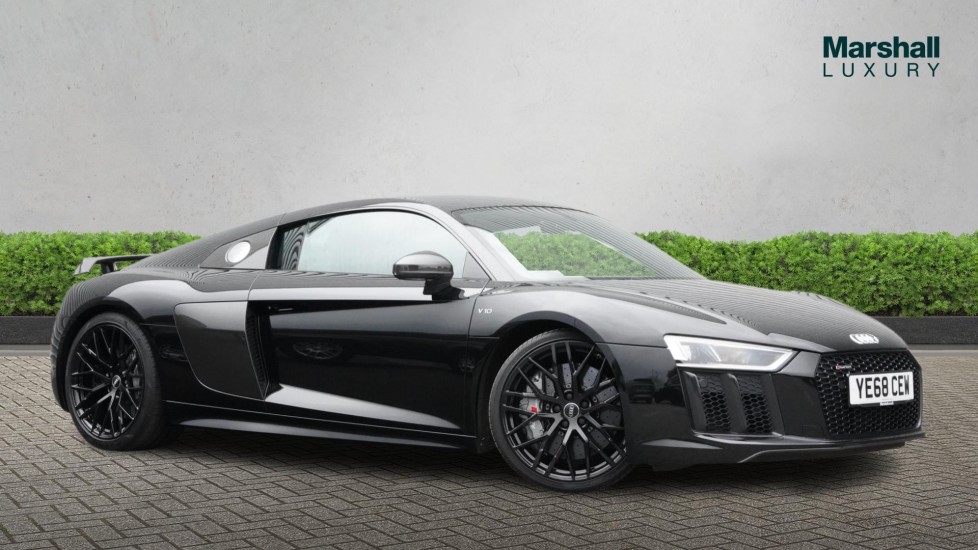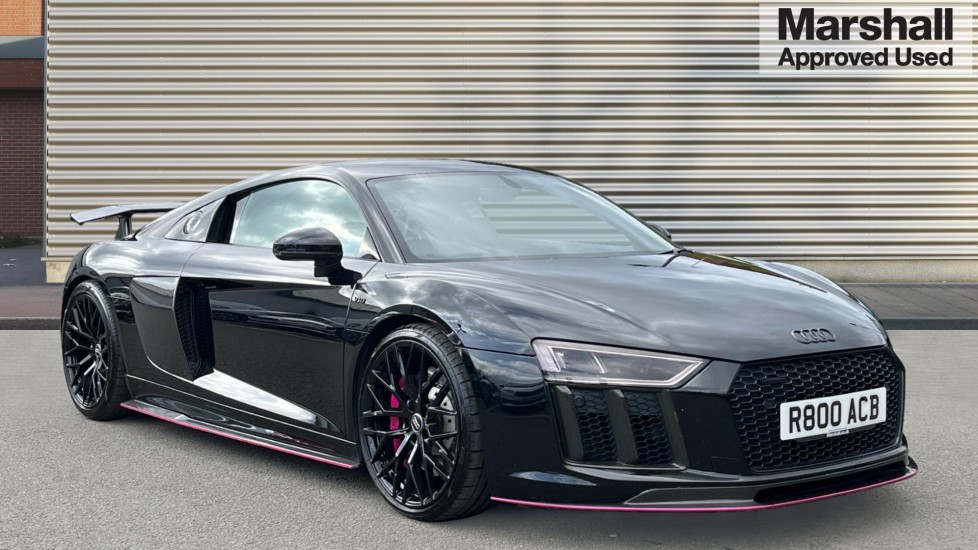
What is the best car that is low to the ground? Keep reading to find out, we have brought together a list of cars that share at least one thing in common – they're low to the ground.
They are all also pretty sporty, although we have taken care to choose a list of cars that will appeal to a range of budgets as well as bringing you cars that are all about driving, you'll find models that add a modicum of practicality to the mixture.
Mazda MX-5
Year launched: 2015

As the Americans say: the answer is always Miata (or MX-5 in, erm, english). Turns out that's true even when the question is what's the best car that's low to the ground? That's very much the appeal of the MX-5, though, because you get the full sports car feel – the long-bonnet-pert-bottom looks, revy engine, drop-top roof and, indeed, the low ride height – at a very reasonable price.
Sure, it's not known for being the quickest, but the new 184PS 2.0-litre four-cylinder plugged that particular problem giving the MX-5 a none-too-shabby 6.5 second 0-62mph time. What all MX-5s are however, is great fun. They all have quick steering, enough body roll to unsettle the back end for sneaky tail slides and a tight gearbox that's simply perfect.
They're also very reliable – not something that could be said for your traditional British sports car – and filled with kit like sat-nav and air conditioning. Downsides? Well, it is a two-seater with a small boot, but if you can live with that, you'll not regret buying one.
Honda NSX
Year launched: 2019

If the new Honda NSX was a person, it would be Bruno Senna. He's a talented human being, with a name that's legendary in motor sport but unlike his famous uncle – Ayrton Senna – he lacks that extra bit of brilliance to convert him from a good racing driver to a brilliant one.
Conveniently, it was Ayrton Senna who was responsible for much of the development of the legendary original NSX – and it's a car that also leaves its younger nephew in its shadow. Probably not a surprise, because the new NSX swaps the old model's nimble chassis and high-revving VTEC engine for a less charismatic hybridised unit, heavy batteries and four-wheel drive. It's quick but ultimately less brilliant.
It's a lot easier to live with, mind. The clever powertrain means it can run on electricity alone in town – which helps it get decent fuel economy (for a car that can do 0-62mph in 3.3 seconds) – and you get creature comforts such as air-conditioning and sat-nav. Above all else, though, you get a car that looks great thanks to its origami edges and low-to-the-ground stance.
Porsche 911
Year launched: 2019

We said this list wouldn't be full of impractical sports cars and the Porsche 911 keeps us (sort of) true to our word. The problem is, cars that are low to the ground do tend to be sporty. But, as sports cars go, the Porsche 911 is pretty practical thanks to the boot in its nose and tiny back seats. It also feels a lot posher inside than your average supercar.
Thankfully, none of these concessions to practicality diminish how the 911 feels in bends. Its steering is accurate and positive, body control is near perfect and it's rear-engine setup not only helps guide the nose into a corner, it also gives you plenty of grip powering out of them. Factor in brakes that give you lots of feel and power, and it's pretty close to the perfect handling car.
Compared to base 911s of old, it's also very quick. Twin turbos now come as standard, which helps improve efficiency but also gives you a slug of torque that was missing before. It equates to 0-62mph in 4.2 seconds and a top speed of 182mph. As cars that are low to the ground go, this really is the complete package.
Lotus Elise
Year launched: 2010

The Lotus Elise has got to be one of the cheapest ways to get your hands on a car that's (extremely) low to the ground. Quite how low this Lotus sits on the road can only be appreciated when you see it parked kerbside – it's every inch a junior supercar in appearance.
It's not too far off when it comes to driving, either. The 240 Final Edition – Lotus has just announced that the Elise is heading to the great scrap heap in the sky, soon to be replaced by an all-new model – gets from 0-62mph in 4.1 seconds and onto a top speed of 149mph. It also tips the scales at a mere 931kgs – half what a Porsche 911 weighs – so it can change direction quicker than a humming bird on a nectar hit.
Why it's so light will soon be apparent when you get in and sample the Lotus' scorched-earth approach to interior fixtures and fittings. You get thick sills, a beautiful little steering wheel and a metal gear-shifter with a cool exposed linkage and, well, that's about it. When you see this, Lotus' motto to 'simplify and add lightness' makes crystal clear sense.
Toyota GT86
Year launched: 2012

Much like the Mazda MX-5, the Toyota GT86 proves that cars that are low to the ground don't necessarily have to be expensive sports or super cars. Compared to the Mazda, though, the Toyota is a much more serious driving tool.
If 'serious' sounds boring though, it shouldn't do, what we mean is that this is a car that has been designed to be driven. Mostly sideways. Conventional modern sports car wisdom went straight in the bin when Toyota designed the GT86, out went expensive sticky tyres, powerful turbocharged engines and a trick four-wheel-drive system, and in came the rock-hard tyres from a Toyota Prius, rear-wheel drive and a limited slip differential. The result? A car that'll wag its tail faster than a Labrador in heat.
With Toyota engineering (well, some Subaru bits too) behind you, it'll likely be as faithful as your favourite pooch and, with sat-nav that has Android Auto and Apple CarPlay, it'll also be as easy to live with. Yes, the back seats resemble a Porsche 911 for their usefulness, but there's plenty of room up front and the driving position is excellent. It could be the most sensible, un-sensible car on sale.
Lotus Evora
Year launched: 2010

Much like its little brother – the Elise – you don't quite appreciate how low the Lotus Evora is until you see it in front of you. That's despite it being a much more practical alternative to the Elise (cynics would rightly point out that that doesn't mean much) built to cater for people who might normally have considered a Porsche 911.
Like the 911, it's got lots of room up front and a couple of rear seats that'll swallow small kids, though German sports car is still way ahead when it comes to build quality. The Lotus makes a familiar counter attack, however, its 1325kg kerb weight means it is a relative featherweight, allowing it to change direction with almost no inertia.
It's also got some decent firepower, which isn't a given in a Lotus. It's 3.5-litre V6 is borrowed from Toyota – so was at least reliable before Lotus started messing with it – and (if you go for a supercharged version) produces up to 430PS. It's good for a 189mph top speed and a 0-62mph time of less than four seconds.
Ferrari 488
Year launched: 2015

Think of a car that's low to the ground and you'll inevitably think of a super car. Probably a Ferrari. It's a brand identity that all other supercar makers would kill for, but there's quite a lot more to it than looking good and sitting low.
The Ferrari 488 demonstrates this with a clinical efficiency. With a 3.9-litre V8 and 670PS on tap, it should be a monster – that's over 200PS more than the terrifying old F40 – but in truth, it's completely docile while also being extremely quick. Clever electronics mean you can trim in as wide an electronic safety net as you feel you need, so the 488 will save you before it all goes pear shaped. Leaving you to enjoy its fast steering, immense grip and ludicrously powerful brakes.
Much like the outside, the Ferrari looks the part from inside. All its controls are mounted, F1 style, on the steering wheel and – if you pay for it – you can have the cabin decked from head to tow in carbon fibre. How much? Well, let's just say prices start from around £140,000.
Honda Civic Type R
Year launched: 2015

Yes, it's a hatchback and yes it doesn't look that low, but try and get the last-generation Honda Civic Type R over a speed hump or onto a tricky driveway and you'll realise it has the ground-clearing abilities of a BTCC racer with four punctures. Perhaps, not a surprise given that it looks like it belongs on a race track.
It certainly doesn't belong on the road if you value your ears or your spine. At 70mph it produces a constant drone like a pneumatic drill (not an engine) is hammering away behind the firewall and the suspension, well, it may as well be sprung with concrete. Get off the motorway, though, and it makes a lot more sense not least because with 310PS and a clever limited-slip differential, it can claw its way though corners and down straights at an alarming rate. For context, it'll do 0-62mph in 5.7 seconds and top out at 167mph.
Inside, it's an OTT ensemble of red trims and Alcantara, but its sporty seats hold you tightly in place, its small steering wheel is nice in your hands and the round metal gear knob is perfect to hold. Proving that some parts of the Type R are practical, you get Honda's trick Magic Seats which means you can store stuff in the rear footwells and the boot is huge in a car this size.
Audi R8
Year launched: 2015

Ground-hugging supercars blow you away with their stunning looks and performance, which makes the Audi R8 something of an anomaly because the best thing about it is just how normal it feels. Looking at it, that might sound like a strange thing to say, but the fact is, with its excellent visibility, brilliant quality and intuitive infotainment, it could be any other Audi when you're sat on the inside.
Press the starter button and any sense of normality quickly evaporates, when its 5.2-litre V10 whips into life. It sounds like it belongs on a 1990s F1 grid and the performance it deliver's isn't too far off matching that metaphor – the Performance model will rip to 60 from a standstill in less than three seconds and whip past 200mph if you have the space and inclination to do it.
Such is the R8's easy nature, hitting those sorts of figures isn't exactly difficult. It's four-wheel drive system makes it as docile as a sleepy lion that's just scoffed down half a wildebeest and it's DSG gearbox gives you perfect acceleration times, every time. Proof if it were needed, that the R8 is the pussy cat of the supercar world.
Jaguar F-Type
Year launched: 2013

The Jaguar F-Type is the kind of car that you could buy on looks alone – no one would argue. Its long bonnet and tapered rear quarters are all but perfect – whether you go for the original or the fussier face-lifted model – and the fact that it's low to the ground only helps matters.
Maybe that's a good thing because, judged as a sports car, the F-Type falls wide of the mark when compared to everyone's go-to sports car – Porsche's 911. Truth is, the F-Type is almost an entirely different type of car, brutish and overpowered – the supercharged V8 models is a hammer to the 911's scalpel. But that doesn't mean it's not still a huge amount of fun.
Get behind the wheel and you do sense Jaguar blew the F-Type's design budget on the exterior because the interior is unremarkable. Your view over the long bonnet and the low driving position, hint that you're in something special, although the cabin itself is only notable for the large grab handle that sprouts out of the centre console.
Not all cars are low to the ground. SUVs, for example, have a high ride height that helps them traverse nasty terrain. Low cars tend to be sportier in nature, kissing the ground gives them excellent aerodynamics and helps them corner as flat as pancake.
As you may have gathered from the last answer, supercars tend to have the lowest ground clearance of all. Their low stance makes them more aerodynamic – for a higher top speed – and helps stop them roll massively in corners. Most supercars have a nose-lift function to help them clear tricky driveways and speed humps.
None of the cars on this list, is the short answer. SUVs tend to have more ground clearance so that they can deal with tough terrain, although most people just like their commanding driving position and the fact that their height makes them easier to get in and out of, as well as making them easier to load with luggage and baby seats.
More best sports car guides
Whether you're looking for advice on what sports car to buy or looking to find your next supercar, we've got the answer
